Enrico M. Vitucci
Deep Learning-based Human Gesture Channel Modeling for Integrated Sensing and Communication Scenarios
Jul 09, 2025Abstract:With the development of Integrated Sensing and Communication (ISAC) for Sixth-Generation (6G) wireless systems, contactless human recognition has emerged as one of the key application scenarios. Since human gesture motion induces subtle and random variations in wireless multipath propagation, how to accurately model human gesture channels has become a crucial issue for the design and validation of ISAC systems. To this end, this paper proposes a deep learning-based human gesture channel modeling framework for ISAC scenarios, in which the human body is decomposed into multiple body parts, and the mapping between human gestures and their corresponding multipath characteristics is learned from real-world measurements. Specifically, a Poisson neural network is employed to predict the number of Multi-Path Components (MPCs) for each human body part, while Conditional Variational Auto-Encoders (C-VAEs) are reused to generate the scattering points, which are further used to reconstruct continuous channel impulse responses and micro-Doppler signatures. Simulation results demonstrate that the proposed method achieves high accuracy and generalization across different gestures and subjects, providing an interpretable approach for data augmentation and the evaluation of gesture-based ISAC systems.
Methodologies for Future Vehicular Digital Twins
Dec 15, 2023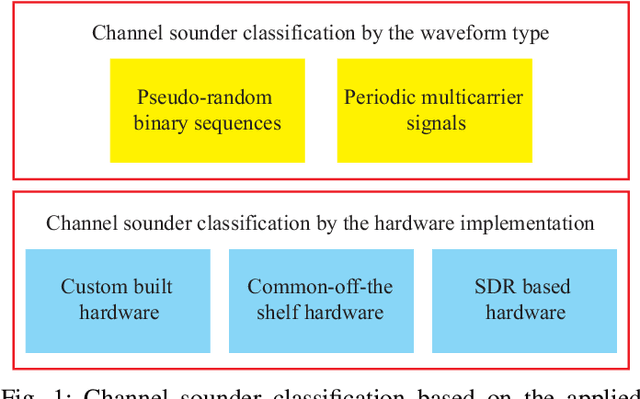
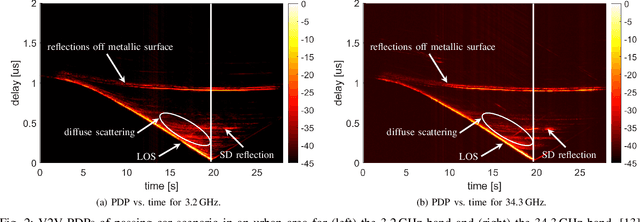
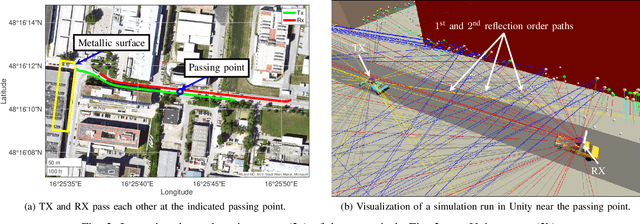
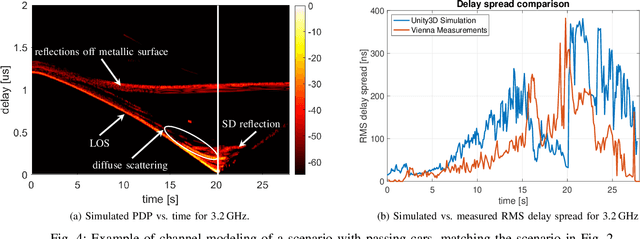
Abstract:The role of wireless communications in various domains of intelligent transportation systems is significant; it is evident that dependable message exchange between nodes (cars, bikes, pedestrians, infrastructure, etc.) has to be guaranteed to fulfill the stringent requirements for future transportation systems. A precise site-specific digital twin is seen as a key enabler for the cost-effective development and validation of future vehicular communication systems. Furthermore, achieving a realistic digital twin for dependable wireless communications requires accurate measurement, modeling, and emulation of wireless communication channels. However, contemporary approaches in these domains are not efficient enough to satisfy the foreseen needs. In this position paper, we overview the current solutions, indicate their limitations, and discuss the most prospective paths for future investigation.
A Study on mm-wave Propagation in and around Buildings
Oct 13, 2022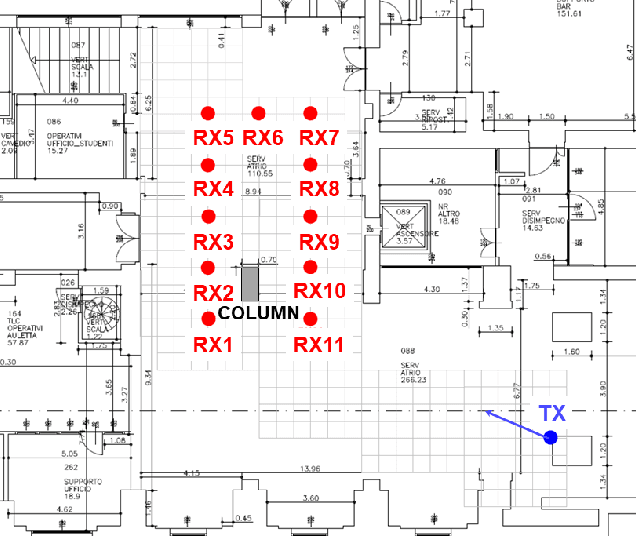
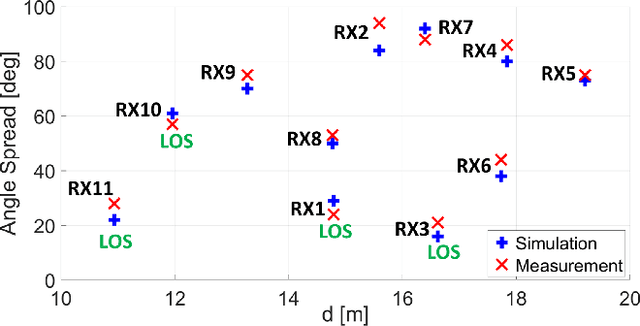
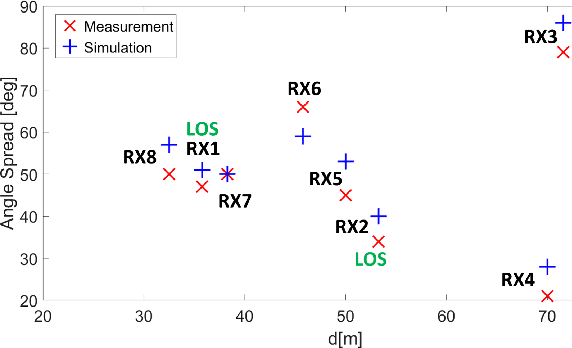
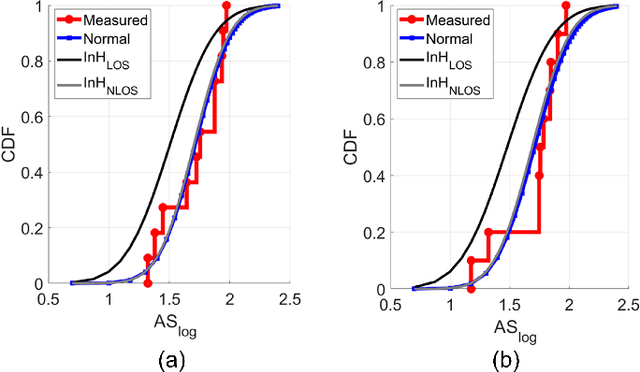
Abstract:mm-waves are envisaged as key enabler for 5G and 6G wireless communications, thanks to the wider bandwidth and to the possibility of implementing large-scale antenna arrays and new advanced transmission techniques, such as massive MIMO and beamforming, that can take advantage of the multidimensional properties of the wireless channel. In order to further study the mm-wave wireless channel, where propagation shows different characteristics compared to the sub-6 GHz band, a joint measurement and simulation campaigns in indoor and outdoor microcellular environments has been carried out. The investigation highlights that the traditional assumption that mm-wave NLoS propagation is problematic is not true since significant reflections, scattering and even transmission mechanisms provide good NLoS coverage in most indoor and outdoor scenarios. This also reflects in the limited angle-spread differences between LoS and NLoS locations in some cases. Finally, the contribution of different propagation mechanisms (reflection, diffraction, scattering and combination of them) to the received power is analyzed in the paper with the help of ray tracing simulations.
On Dynamic Ray Tracing and Anticipative Channel Prediction for Dynamic Environments
Apr 30, 2022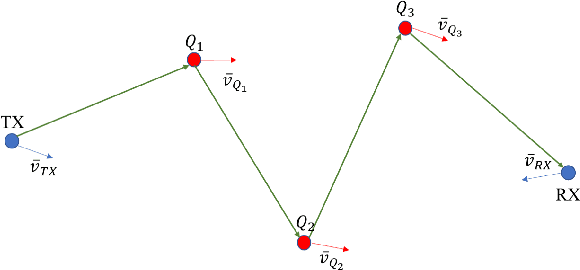
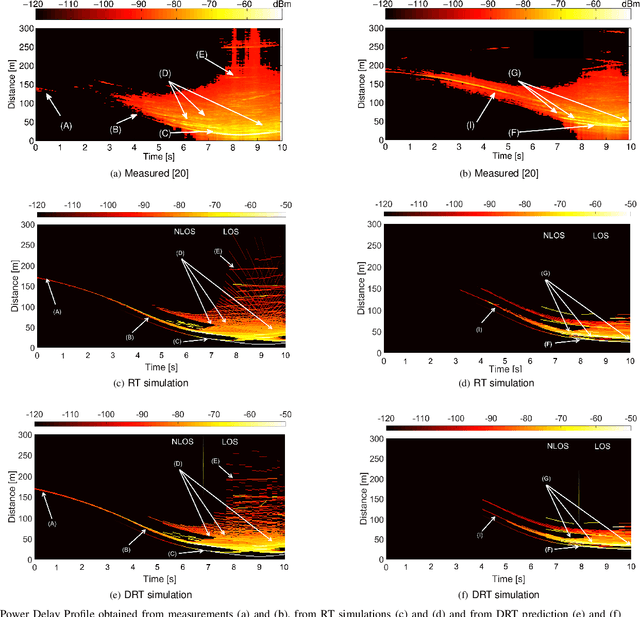

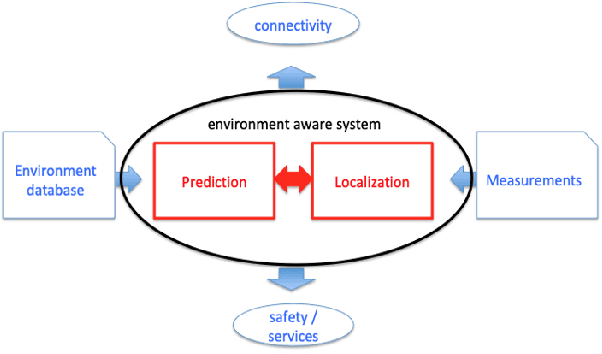
Abstract:Ray tracing algorithms, that can simulate multipath radio propagation in presence of geometric obstacles such as buildings, objects or vehicles, are becoming quite popular, due to the increasing availability of digital environment databases and high-performance computation platforms, such as multicore computers and cloud computing services. When objects or vehicles are moving, which is the case of industrial or vehicular environments, multiple successive representations of the environment ("snapshots") and multiple ray tracing runs are often necessary, which require a great human effort and a great deal of computation resources. Recently, the Dynamic Ray Tracing (DRT) approach has been proposed to predict the multipath evolution within a given time lapse on the base of the current multipath geometry, assuming constant speeds and/or accelerations for moving objects, using analytical extrapolation formulas. This is done without re-running a full ray tracing for every "snapshot" of the environment, therefore with a great computation time saving. When DRT is embedded in a mobile radio system and used in real-time, ahead-of-time (or anticipative) field prediction is possible that opens the way to interesting applications. In the present work, a full-3D DRT algorithm is presented that allows to account for multiple reflections, edge diffraction and diffuse scattering for the general case where moving objects can translate and rotate. For the purpose of validation, the model is first applied to some ideal cases and then to realistic cases where results are compared with conventional ray tracing simulation and measurements available in the literature.
Characterizing the UAV-to-Machine UWB Radio Channel in Smart Factories
Apr 19, 2021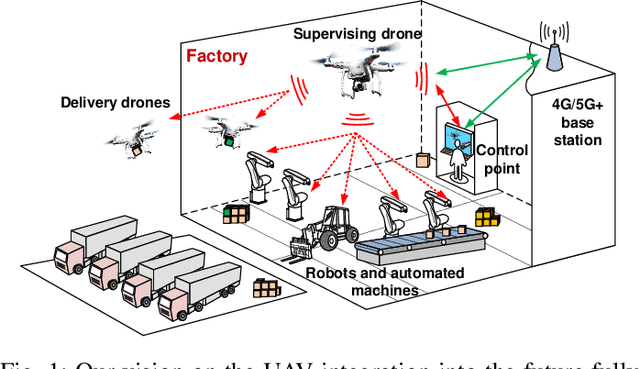
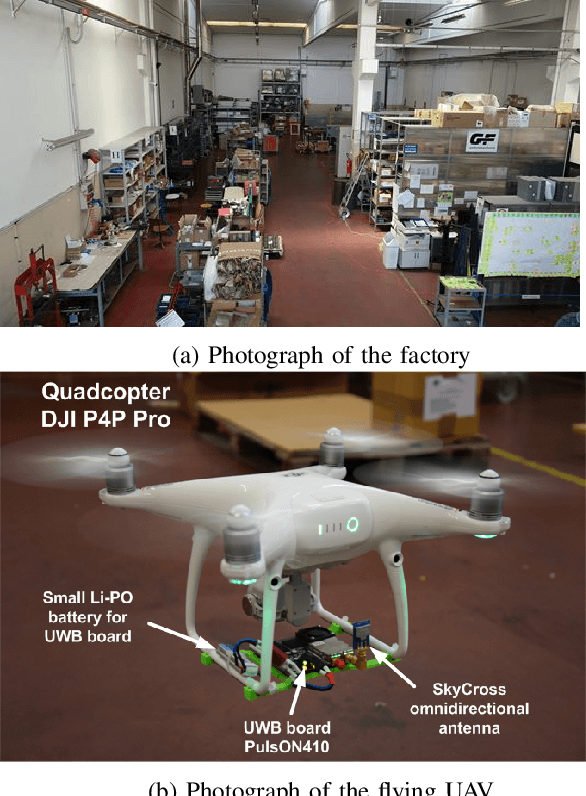
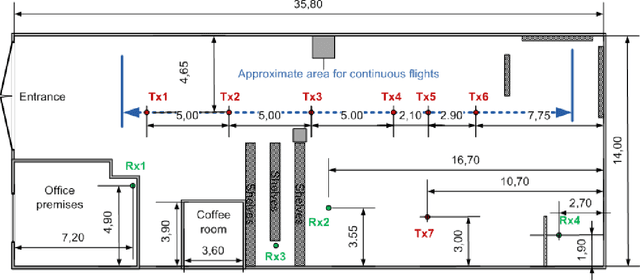
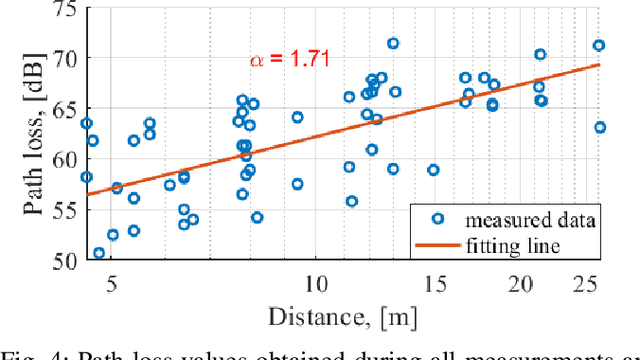
Abstract:In this work, the results of Ultra-Wideband air-to-ground measurements carried out in a real-world factory environment are presented and discussed. With intelligent in-dustrial deployments in mind, we envision a scenario where the Unmanned Aerial Vehicle can be used as a supplementary tool for factory operation, optimization and control. Measurements address narrow band and wide band characterization of the wireless radio channel, and can be used for link budget calculation, interference studies and time dispersion assessment in real factories, without the usual limitation for both radio terminals to be close to ground. The measurements are performed at different locations and different heights over the 3.1-5.3 GHz band. Some fundamental propagation parameters values are determined vs. distance, height and propagation conditions. The measurements are complemented with, and compared to, conventional ground-to-ground measurements with the same setup. The conducted measurement campaign gives an insight for realizing wireless applications in smart connected factories, including UAV-assisted applications.
Empirical Characterization of Air-to-ground Propagation at mm-Wave Frequencies in Dense Urban Environment
Jan 04, 2021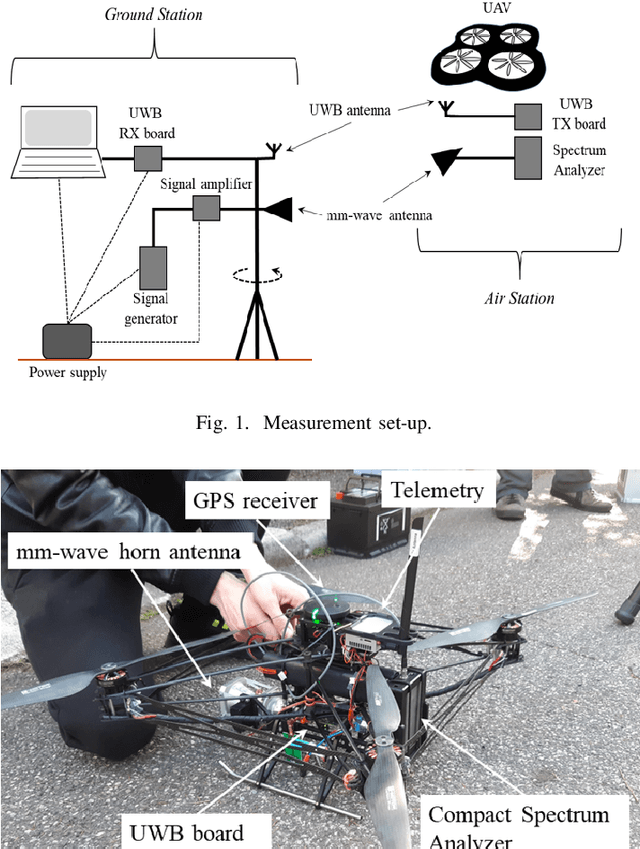
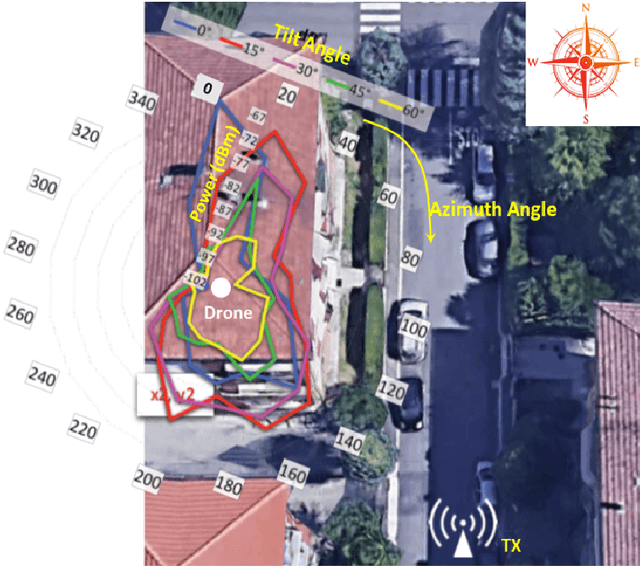
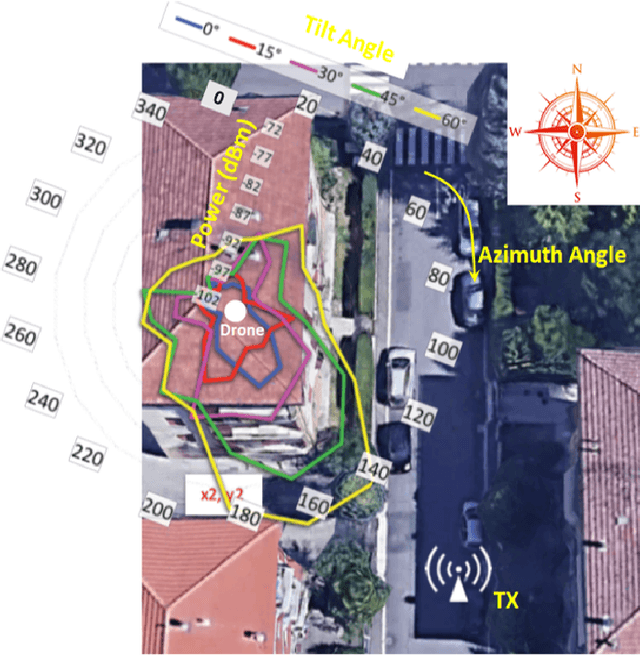
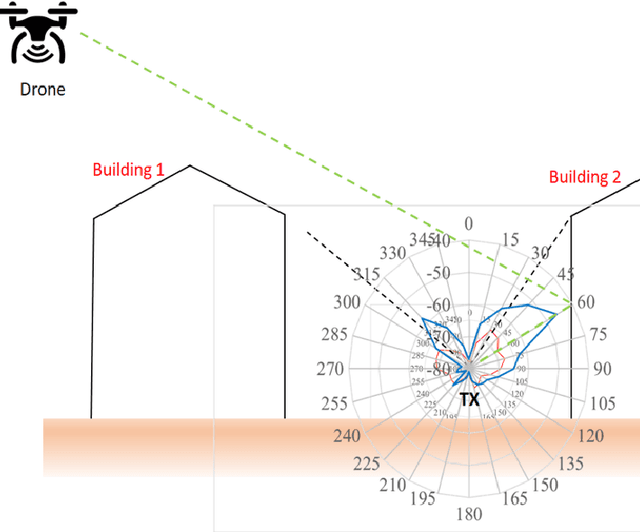
Abstract:In the present study, a measurement setup utilizing mm-wave transceivers with steerable directive antennas, mounted on both a customized UAV and a ground station has been used to study Air-to-Ground (A2G) radio links and, more generally, full-3D mm-wave propagation in urban environment. We evaluate the double-directional characteristics of the channel by rotating the antennas, deriving Power-Angle Profiles at both link ends. Preliminary results provide useful understanding of A2G propagation, e.g. the influence of the antenna tilt angles, or the mechanisms allowing for the signal to propagate from street canyons to the air.
 Add to Chrome
Add to Chrome Add to Firefox
Add to Firefox Add to Edge
Add to Edge